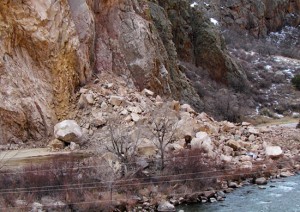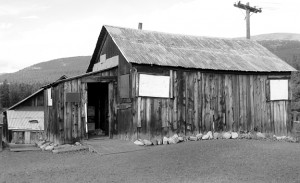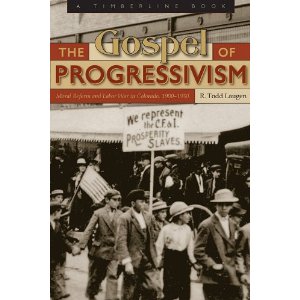By George Sibley
Over here in the Upper Gunnison valley, we have a problem – one that not everyone in central Colorado would call a problem. Leadville, for example, would probably love to have our problem: a mining company with a bunch of money wants to develop a molybdenum mine on Mt. Emmons, the mountain that presides benignly over the town of Crested Butte.
When I arrived in the Upper Gunnison in 1966, Crested Butte would have welcomed the mining company. Most residents still thought of Crested Butte as a mining town, even though it only had maybe a couple dozen people still employed in mining. The ski industry had become the larger employer in town, but the ski area had just gone through a “financial reorganization.” The other significant economic activities in the Upper Gunnison were summer automobile tourism and ranching (cattle and dudes). The valley, in short, was kind of scraping by, and there would have been very little opposition to a new mine. “You gotta have the lunch bucket,” the old timers said.
A decade later, in the late 1970s, it was different. The ski industry and its shadow industries, real estate and construction, were in boom phase; mining had receded to a vaguely revered “heritage” – and most of the people up-valley were happy to keep it there, and no part of the present. So when American Metals Climax, AMAX, announced in 1977 that there was a big rich deposit of molybdenum up on Mt. Emmons, and they were going to do our valley the favor of investing in a big mine there – not only did no one express enthusiasm, there was a lot of immediate antagonism.
The antagonism was noisy enough to hit the national media, well orchestrated by a group of post-graduate post-urbanites who were as delighted as cats to see a big clumsy mouse of a company, used to wowing the hicks, shamble into their zone. After a couple years of trying to negotiate a mine, the company withdrew – leaving behind, ironically, an “improved” situation. They had built, as a show of good faith, a multi-million-dollar treatment facility to clean up the water flowing out of the old mine works on the site, heavy metals from which killed the stream flowing through town.
The High Country Citizens Alliance, the organization that worked with Crested Butte’s town government to orchestrate opposition to the mine, accepted credit for that withdrawal, and deserved a lot of it. But a couple other things happened that also helped affect the company’s retreat. One was a price collapse in the global molybdenum market – a global bust that killed the local boom in embryo.
The other thing was the growing web of environmental, social and public health laws, and agencies at all levels of governance charged to carry them out. To help AMAX work its way through the web, the Colorado Department of Natural Resources worked with the U.S. Forest Service to set up an informal “Joint Review Process” whereby every party with a legitimate concern about the mine sat at the table and “helped” the company come up with a mine that would comply with everything. This process was as slow as democracy, and strung out the process of getting a passable mine project long enough for the moly boom to tip into the bust side of the cycle – the way mineral markets usually do on a fairly short cycle. (The Joint Review Process has since been abolished, in the 1990s rush to deregulate everything.)
That wasn’t the end of the story, of course; the mining industry believes there are billions of dollars of molybdenum in that mountain. AMAX – still operating the treatment plant, at around a million dollars a year – gave the deposit another look, briefly, in the mid-1990s, but instead sold it all to another company, who sold it to another company; and now another new owner has decided to act. Well funded, they say they are serious; this time, they say, there will be a mine.
The “no mine no way” machine has cranked up again, and has been at relatively high decibel for over a year now, but the company is basically acting as though that faction didn’t exist, and is doling out beads and mirrors to the natives. The High Country Citizens Alliance is opposing the company before regulators every step of the way, but the state of the economy today is a thumb on the scale of regulatory justice.
I find myself having some personal trouble with this war – with its all-or-nothing aspect. I really don’t see where there is room for even a modestly scaled mining operation in a part of the valley that has become thoroughly cluttered with the consequences of a moderately successful resort industry. But the mine company says there is; they can do it. So who is right?
Beyond that, however – I am bothered by my own complicity in the international moly market. I drive a car, ride a bike; once or twice a year I fly somewhere in airplanes. But most of all, I live in a place that requires practically everything necessary to live here to be brought in on big trucks, in big pipes, and over long wires or tall steel towers. My life here is totally dependent on “resource development” – lots of resources, including molybdenum.
As a result of this complicity, to “just say no” to a mine seems to present me with a Hobson’s choice: either I ought to change my life drastically, to make it as pure as my ideals, or I have to accept that I am just a spoiled NIMBY-ite. In other words, I want the fruit but I don’t want to water the tree.
It comes down to the question: is it really possible (as the mine company claims) to have a mine that will not destroy our existing economy and culture (as HCCA and the Red Lady Coalition claim it will)?
There has to be a way, a place, a process for working through questions like that. And in fact, Colorado, back in a brief period of illuminated statesmanship, anticipated this, and gave places like our valley some tools for working on such questions. House Bill 1041 in 1974 gave county commissioners the power to pass “Special Development” rules and regulations that would protect the local environment, economy and culture from mines, resort developments, water projects, and other big things that formerly simply sort of rolled over communities with an adapt-or-die regimen. These “1041 powers” have been tested all the way to the Colorado Supreme Court and found to be – powerful.
And Gunnison County took advantage of that opportunity, and has a pretty strong “special development resolution.” It says to the mine company that the watershed must be protected. The project “shall not aggravate natural hazards or increase risk to the public.” It “shall not have a significant adverse effect on housing availability or cost.” It “shall not significantly degrade property rights held by others.” It “shall not significantly degrade existing visual quality, or cause excessive noise and vibration levels, dust, fumes, glare, exterior artificial light, heat, and odor (with a long list of specific instances). It “shall not significantly degrade any current or foreseeable future sector of the county economy.” It “shall not create an undue financial burden on existing or future residents of the county” (with a list of specific considerations). Et cetera – there are more things like those the community can make the mine work into a mine plan, requiring upfront mitigations, with full power to stop them if they start something that violates the resolution. (The resolution can be found online at www.gunnisoncounty.org, in the “Planning” section.)
I would feel better if, instead of shouting “not in my backyard,” we were using that resolution to set up a “joint review” table of our own, if the state doesn’t want help anymore, and saying – Okay. We acknowledge that our way of life needs you as much as you need access to our mountain, but we can’t afford to lose what we have to get what we need. So if you can create a mine that meets these standards, with us watching you every inch of the way (count on it), then we should be able to live with that kind of mine. It would not be easy; it’s a very complex situation – but we live very complex lives and can’t forever shield ourselves from that.
My friends up-valley will respond – don’t be naïve; you can’t trust the mining industry. They’ll say they’ll do something, then just won’t and will say “so sue us.” And there’s a history of truth to that in many places. Democracy is always poker with a certain amount of bluffing on both sides.
But still – if it’s impossible to trust our own protective regs and try to do it that way … then that says something about this Western Syphilization we’ve created, doesn’t it? If here and now, in a community of really smart people, we can’t figure out how to live actively with our own consequences, then our current slow fade to sunset might be about what we deserve.
George Sibley mines for metaphors in the Upper Gunnison Valley.




